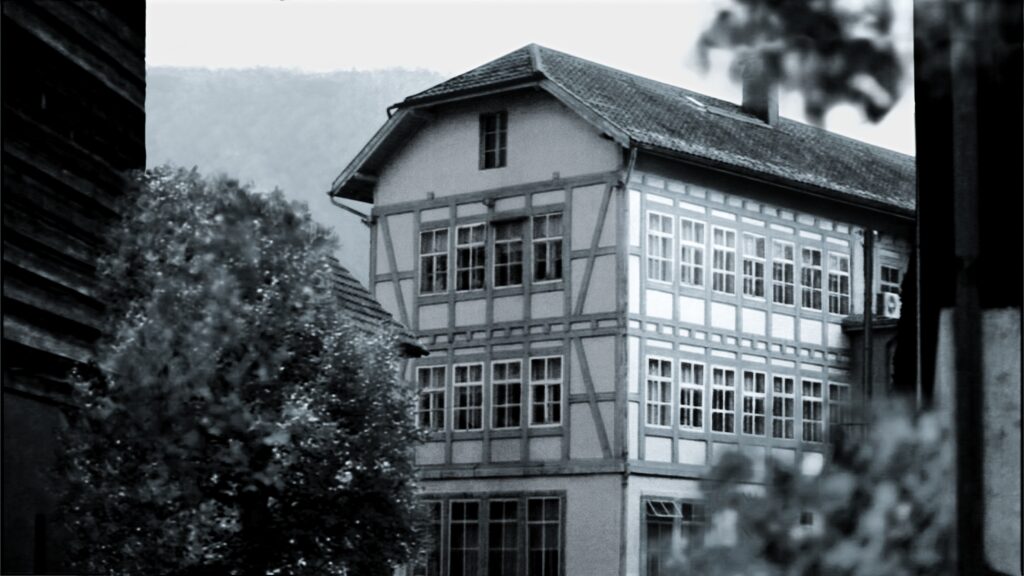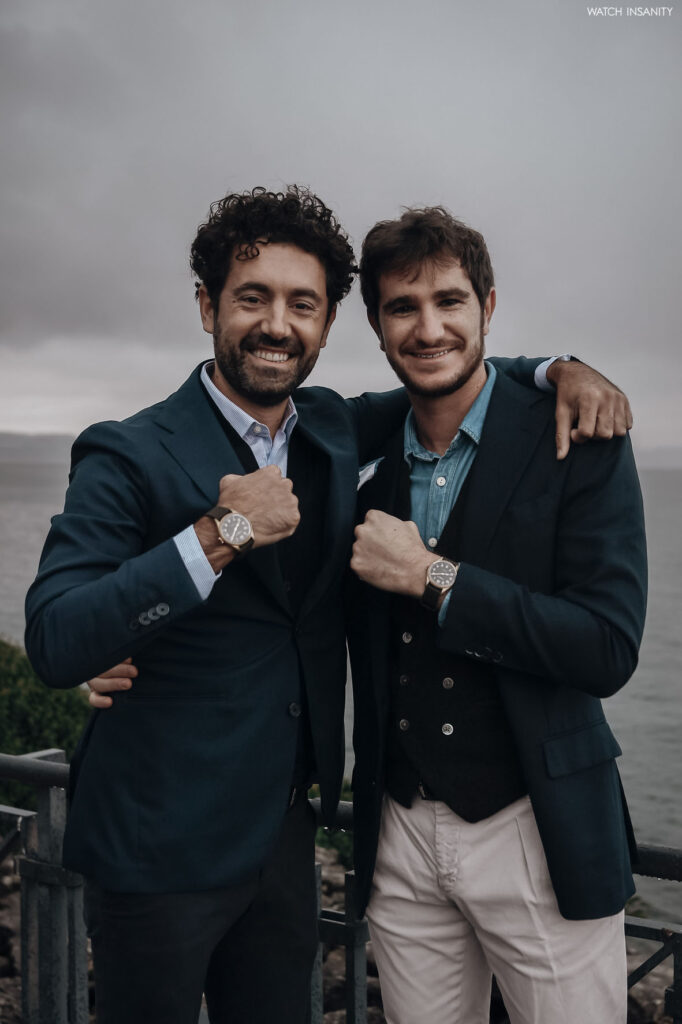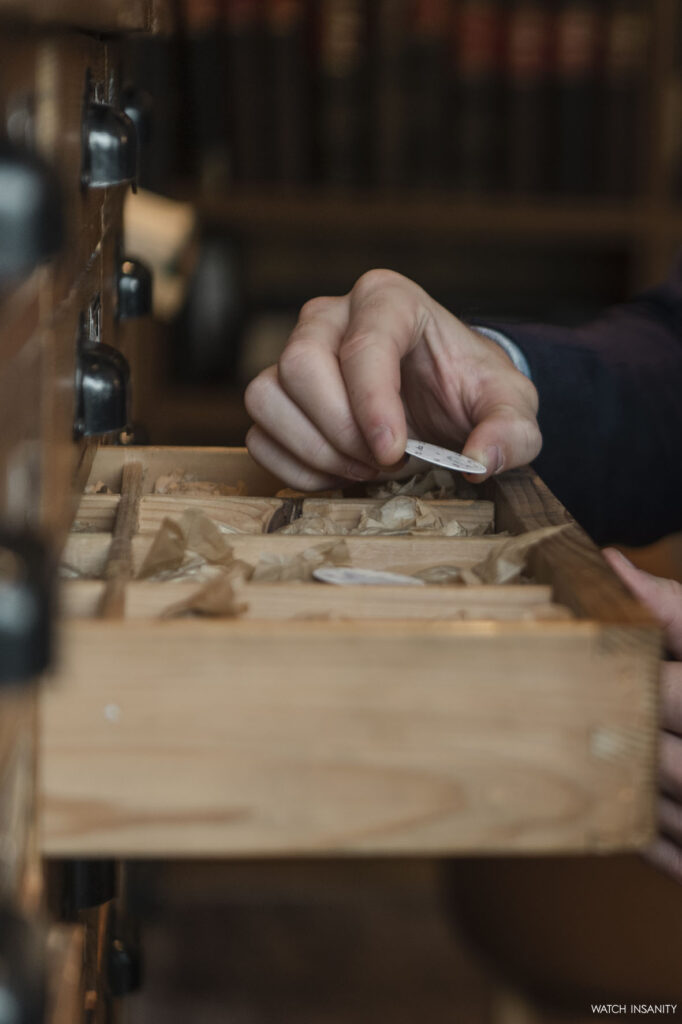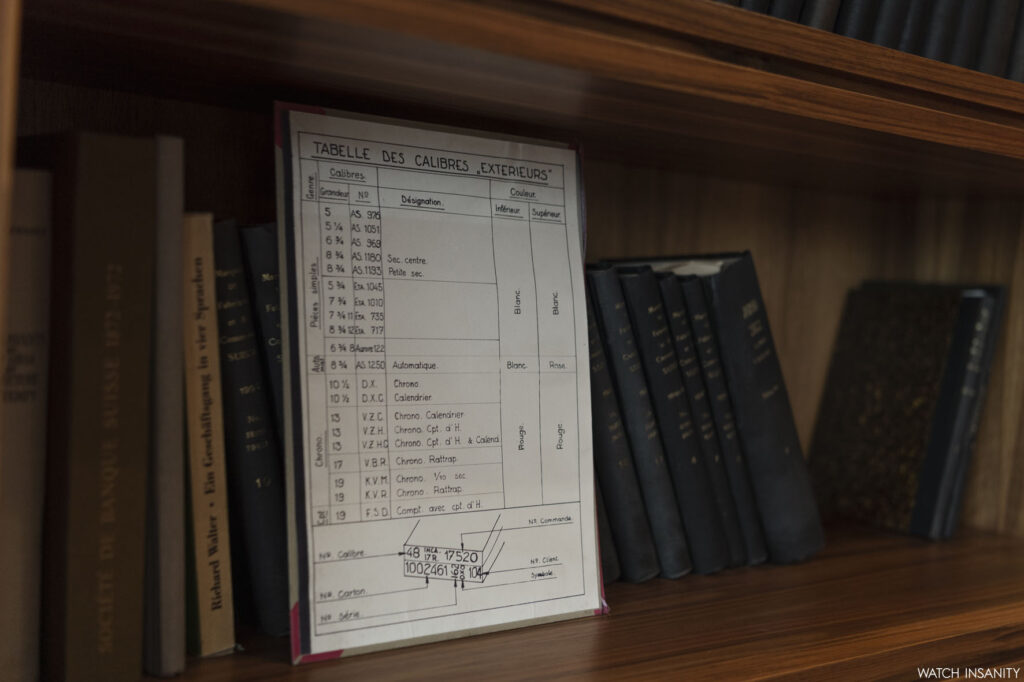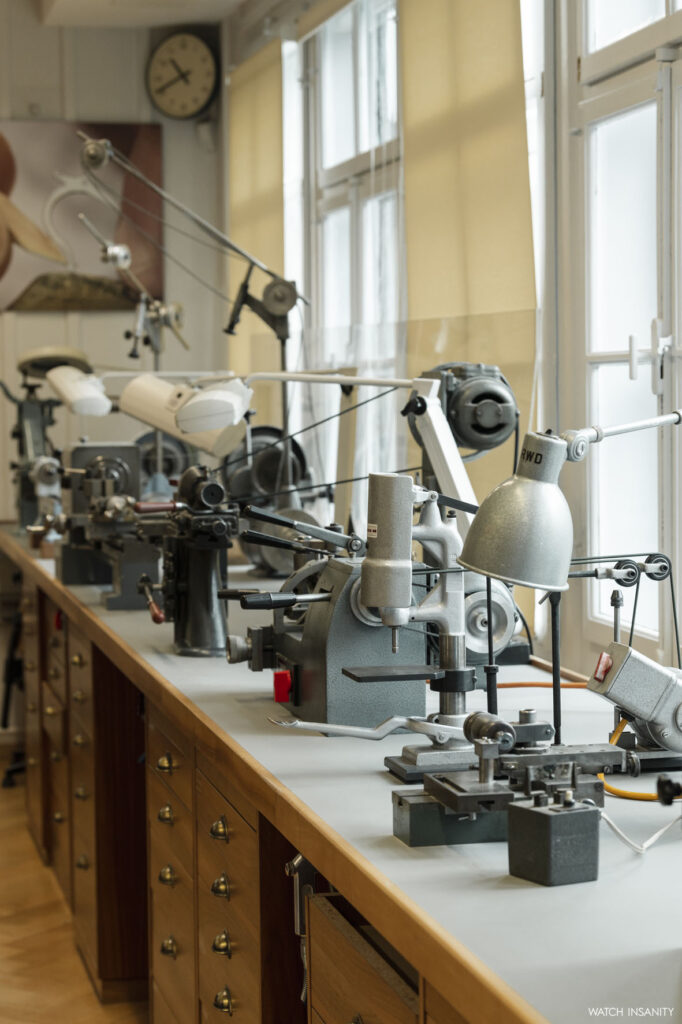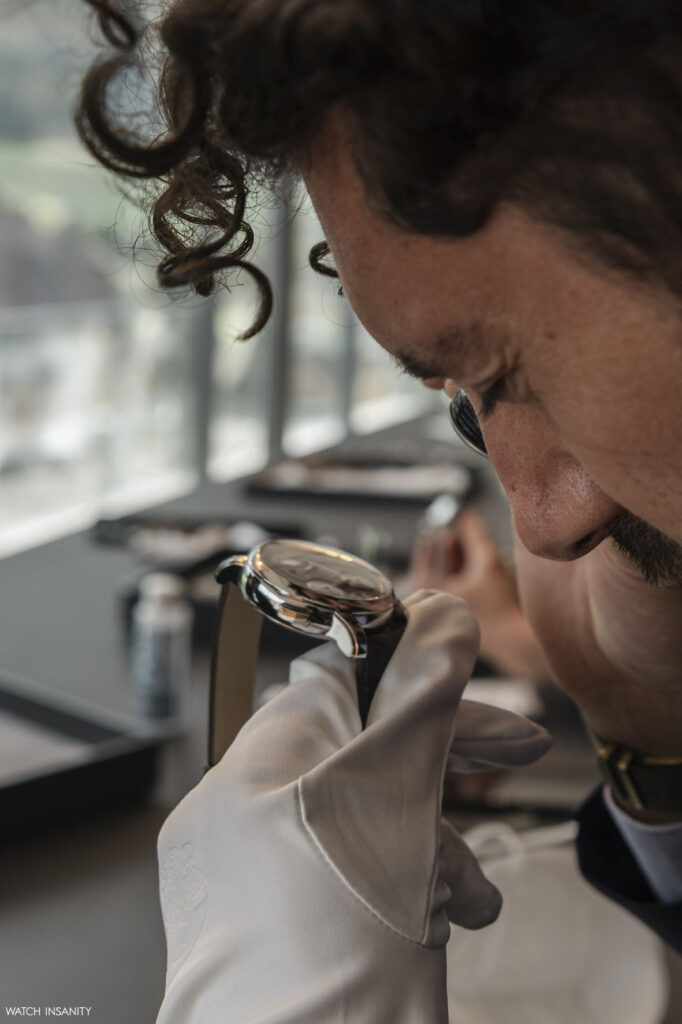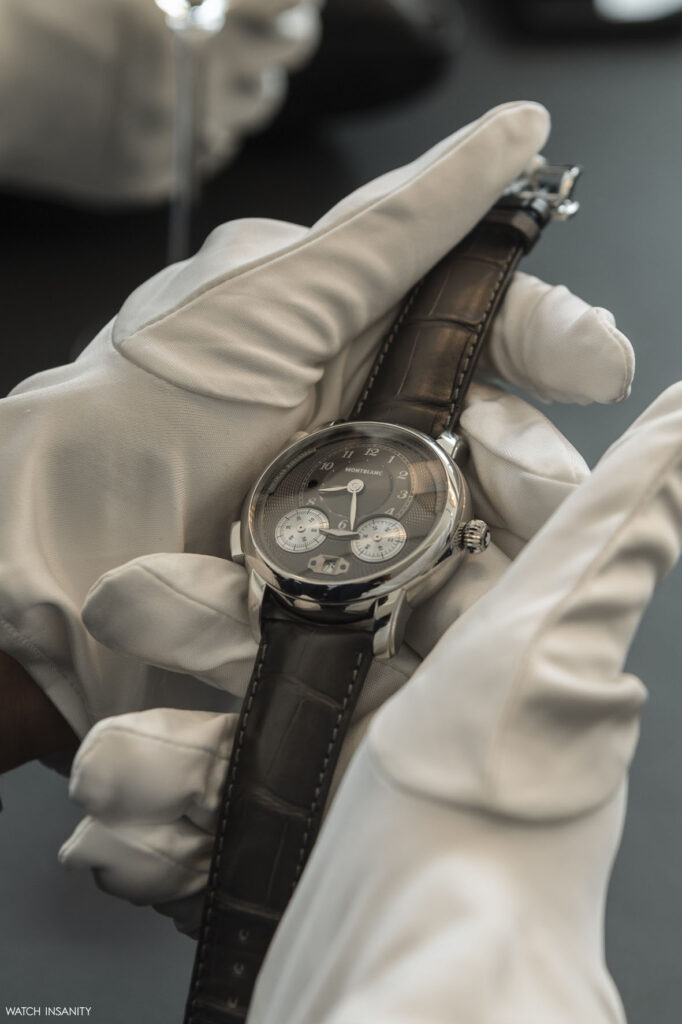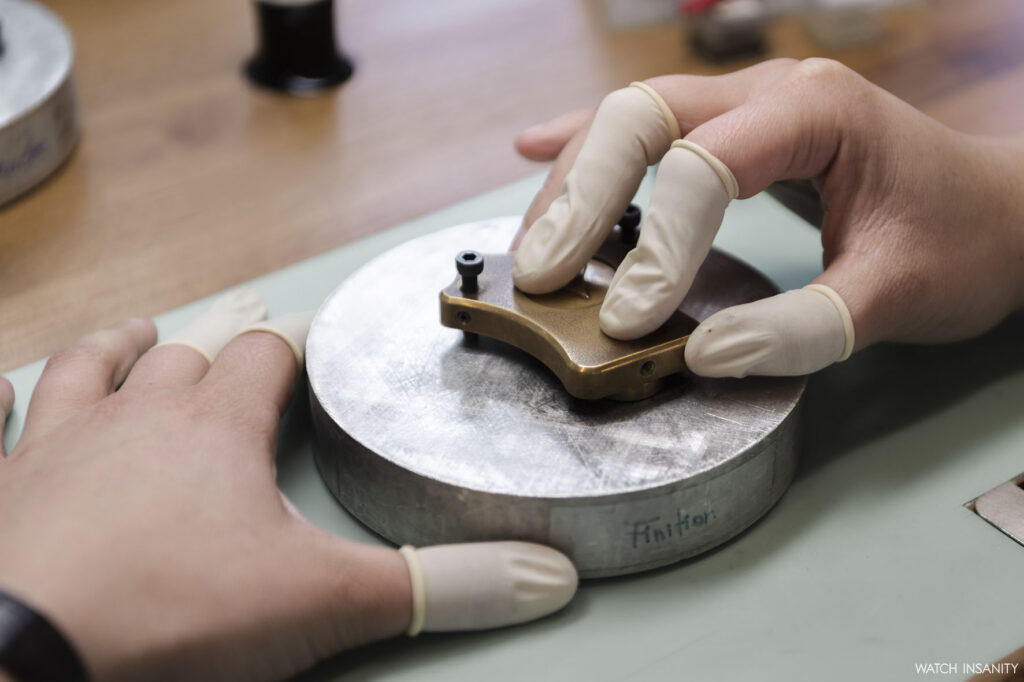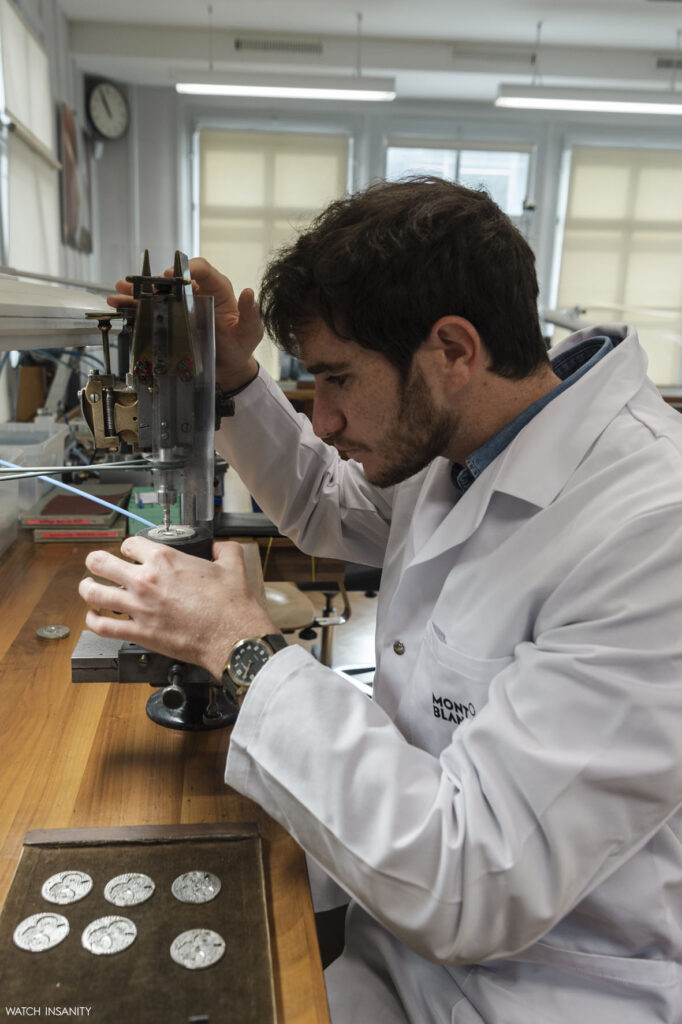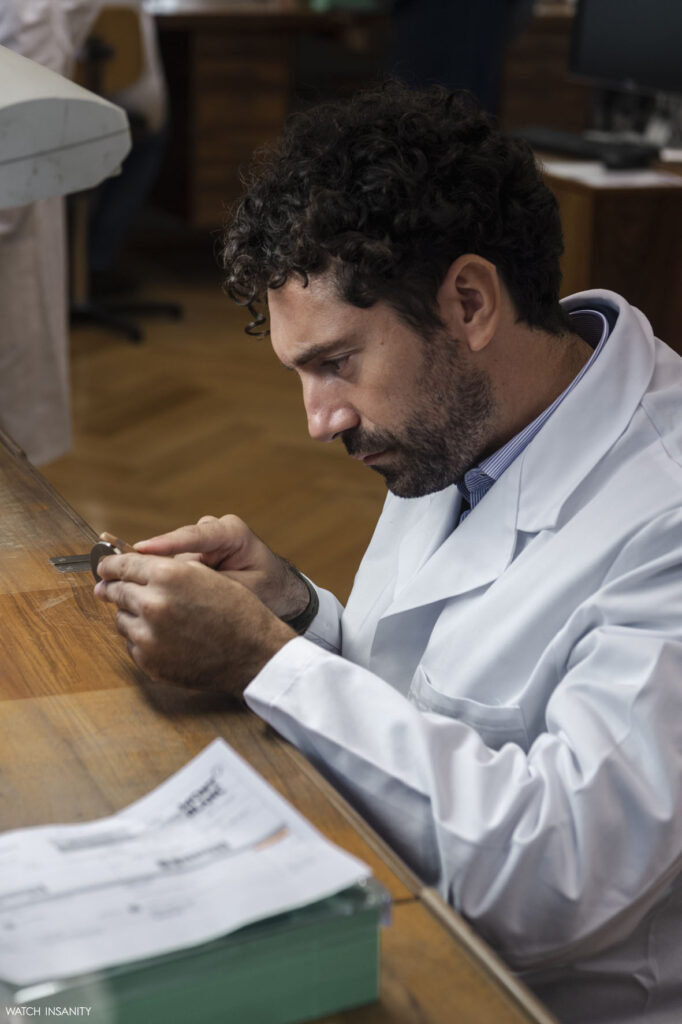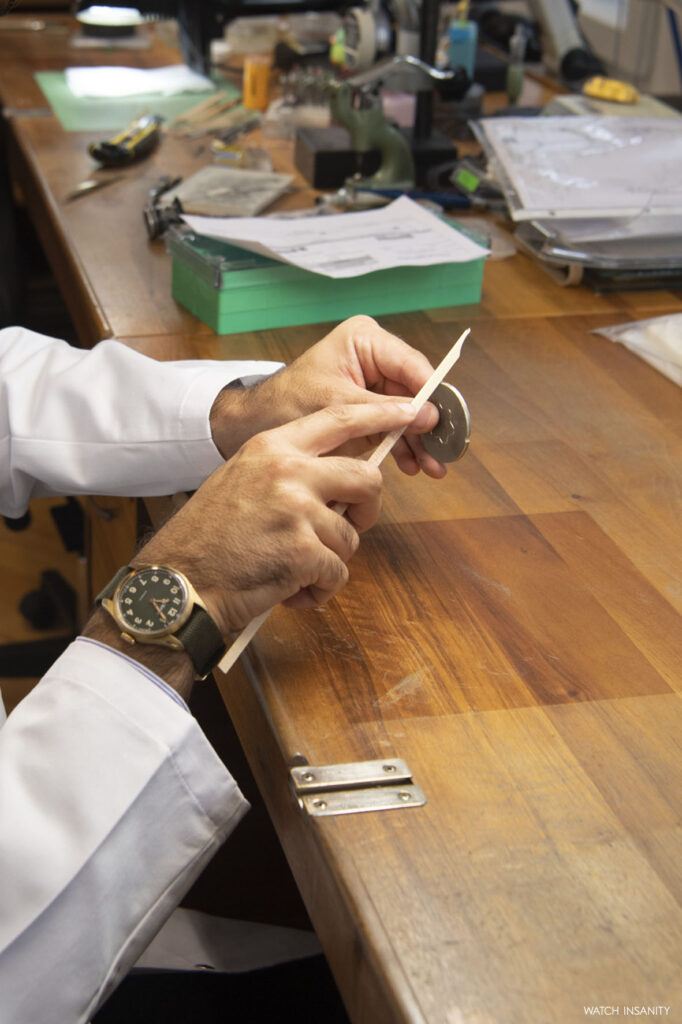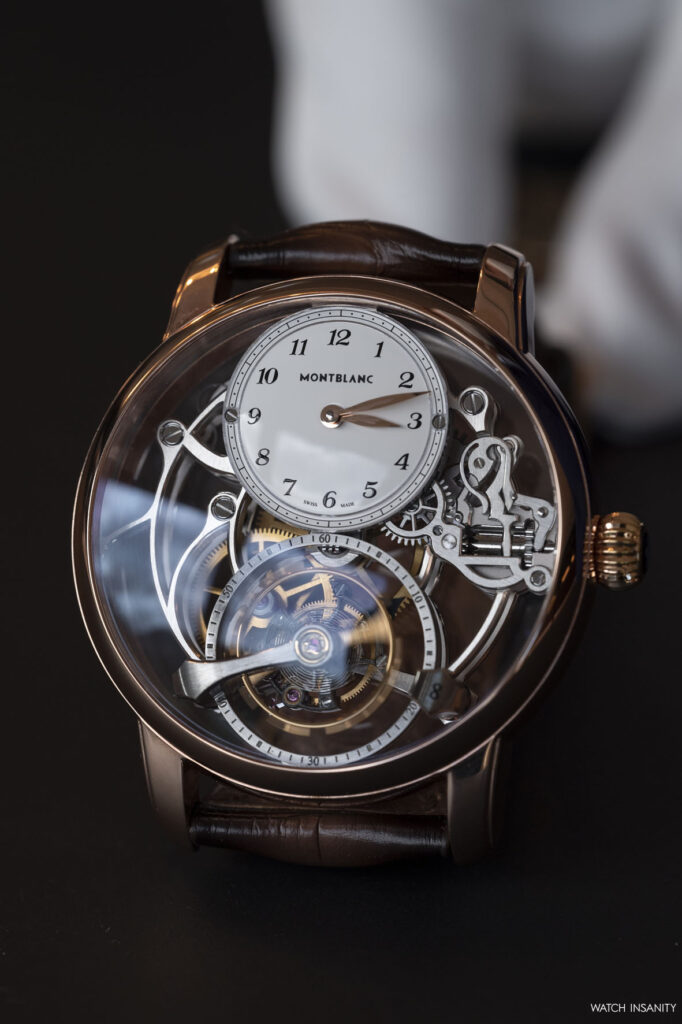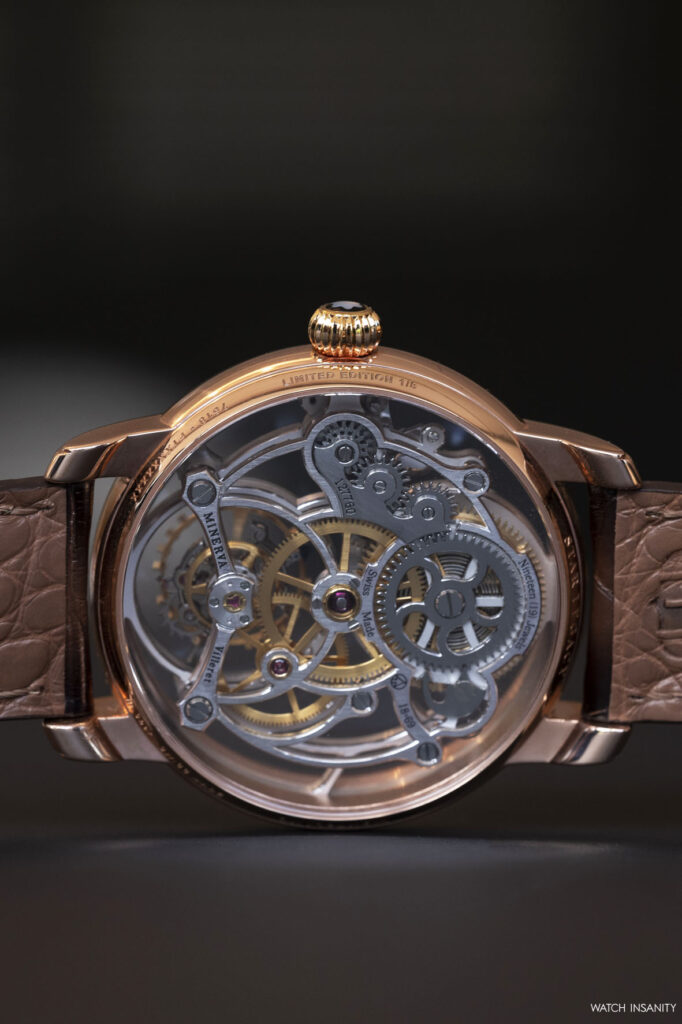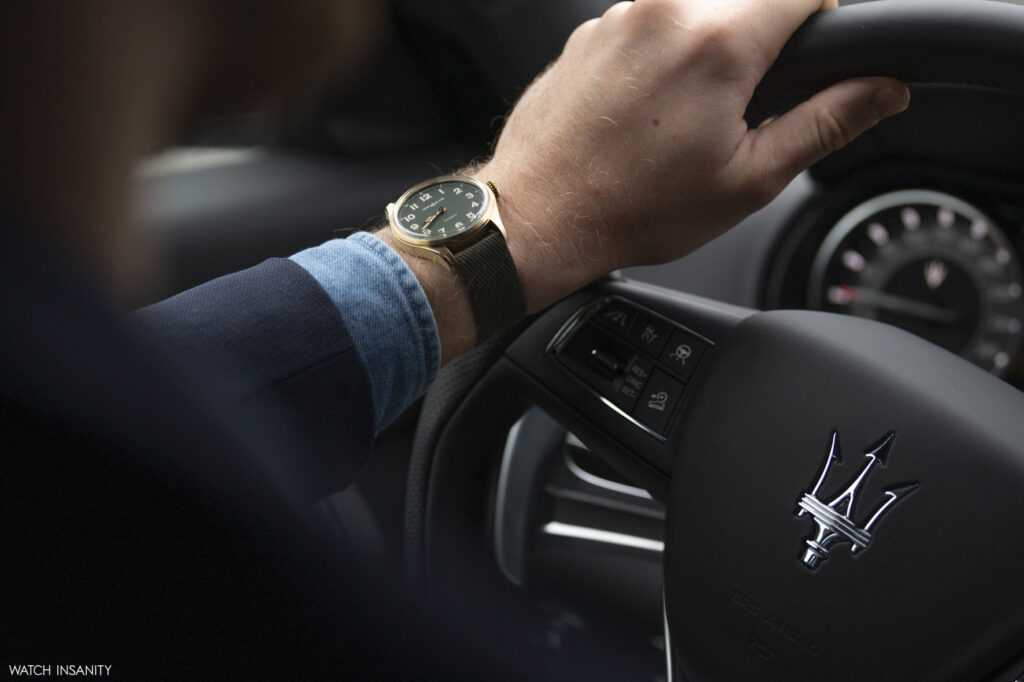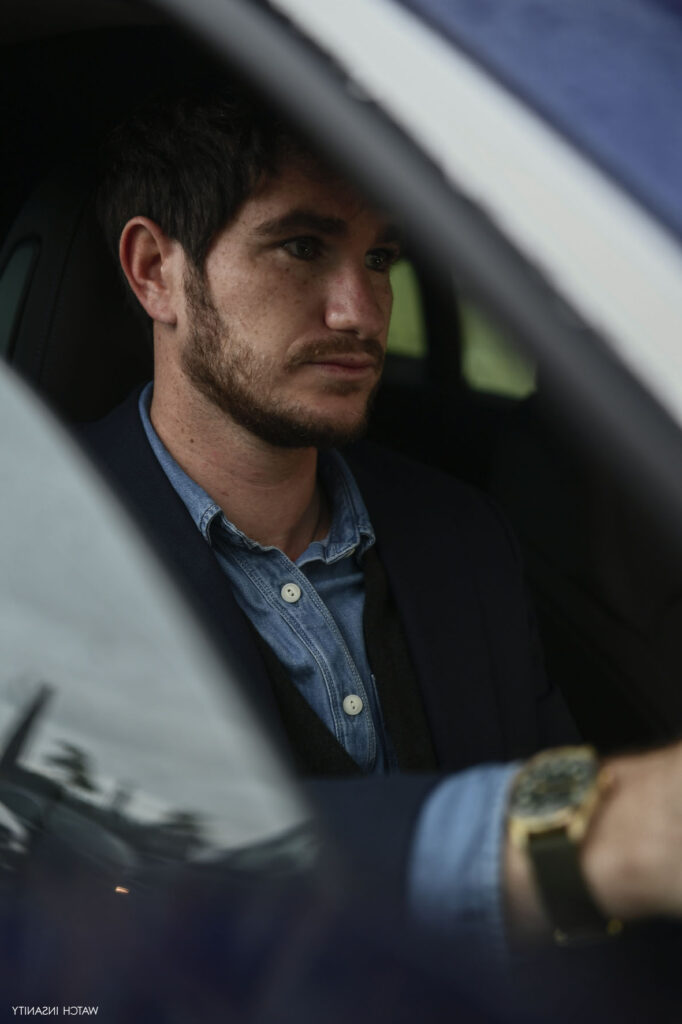Discovering the Minerva manufacture with Montblanc and two historical jewelers: Orologeria Luigi Verga 1947 and Sergio Capone Jewellery
19 October 2021What are enthusiasts and collectors looking for in a haute-horlogerie brand today? The same kinds of timepieces, the same finishes and mechanical excellence they once sought, or have the tastes, inclinations, culture of Italians who love precious watches changed? These are questions that can be answered by those who, every day and for generations, have been talking with clients, learning to know their tastes, directing their choices or following their moods. Italian retailers have few equals in Europe and, perhaps, in the world; for their widespread presence on the territory and in the distribution chain, for their knowledge of the market and local customers, for their ability to recommend the purchase closest to the buyers’ tastes. Especially this last issue is less banal than it seems because, often, the enthusiast looking for his or her own type of watch will find it in one brand and not in another; the ability of the retailer is also that of knowing how to direct the choice without forcing it, being aware of the fact that he is not infrequently constrained to widen the range of brands to propose, precisely because each of them presents different peculiarities.
Montblanc is among the very few brands, perhaps the only one, which can meet the wishes of different enthusiasts, thanks to the dual soul of its collections. On the one hand, the sportiness and contemporaneity of 1858 or the Star Legacy collections, closely linked to the more modern history of the brand; on the other, the Heritage line that carries the Minerva tradition. Montblanc Montre S.A. was in fact founded in 1997, four years after the acquisition of the brand by Richemont, but the turning point came in 2006 with the acquisition of the Minerva factory – founded in Villeret in 1858 by Charles-Yvan Robert– allowing it to assimilate the know-how of the brand which, together with Heuer, contributed to the birth of the chronograph.
Collections that span generations, just like for the most important Italian retailers, often family companies, at the helm of which we sometimes find the founders’ children, grandchildren or great-grandchildren. Precisely for this richness of vision and for this parallelism with Montblanc’s recent watchmaking history, we have chosen to ask Federico Verga and Enrico Capone to come with us on our journey to discover the Minerva manufacture. Respectively the third and second generation working in their companies, they belong to two historic families who, in Milan, and in Pisa and in Versilia, have linked their name to haute horlogerie world. They were guests in Villeret, where they breathed watchmaking and tradition, witnessing the birth of mechanical masterpieces with their own eyes.
It is one thing to sell a watch, but another thing is to see how and where it is born: what impressed you most about your visit in Villeret?
VERGA: “It was the very first time for me at the Minerva factory. I usually visit much larger factories, and seeing an almost familiar, small and compact factory was very pleasant, especially since the basic structure remains the same as when it was founded. I saw both tradition and innovation, which made the visit very pleasant. It’s also nice that the factory is located in the very center of the city, while the others are almost always decentralized, towards the outskirts or in the middle of the valleys, surrounded by nothing. Minerva, on the other hand, has neighboring houses, a church, a nearby farm…”

CAPONE: “It’s always exciting to visit a place that has made the history of watchmaking, where the first Swiss pocket watches were born long ago. Immediately upon entering I was filled with positivity, it was a unique experience in a factory where past and present meet, a timeless place.”
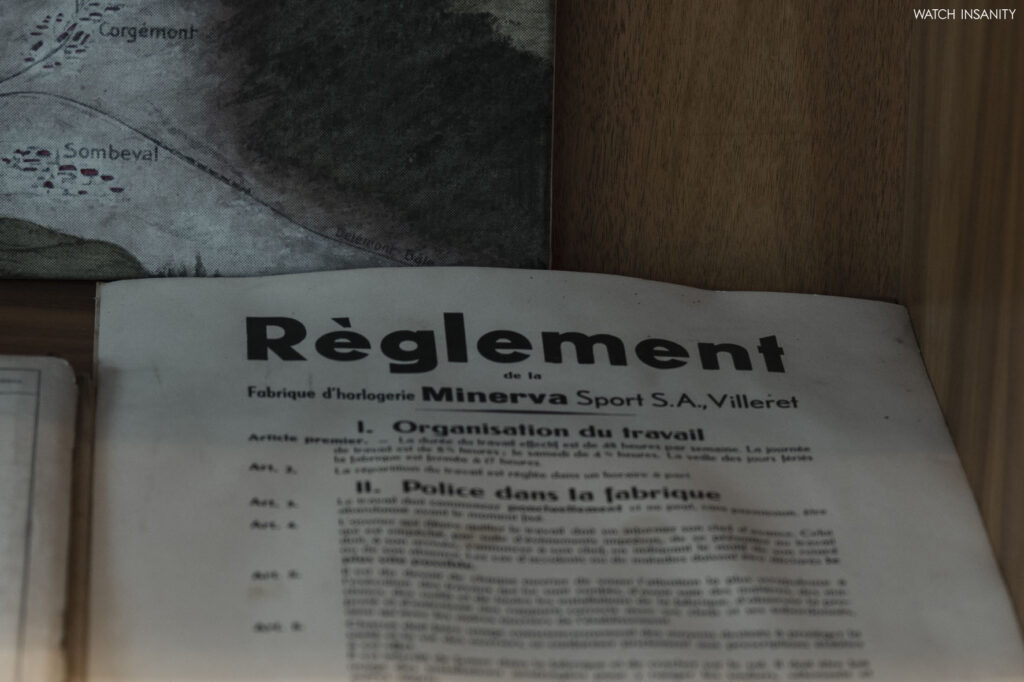
Having known the Minerva manufactury from inside, how much will it help you to choose the right approach in telling the customer about the brand?
VERGA: “When a salesman has had this experience, you can feel it by listening how he talks about the product, everything is easier for him. If I had only read the story in a book, my story would be a completely different one, there would be no enthusiasm nor desire to explain. Because there is so much to tell, when you get access to the heart of the production it’s like you can touch the history of the brand. The experience was great also because I had the opportunity to work with my own hands on handcrafted finishes such as perlage, anglage: a unique and exclusive opportunity. These are finishes that not many watch buyers know, they do not know that behind them there is the hand-crafting work of many people. Like Mrs. Sandra, who works the Minerva movements in the morning with the coquille diamond finish, while in the afternoon, she works on her farm.”
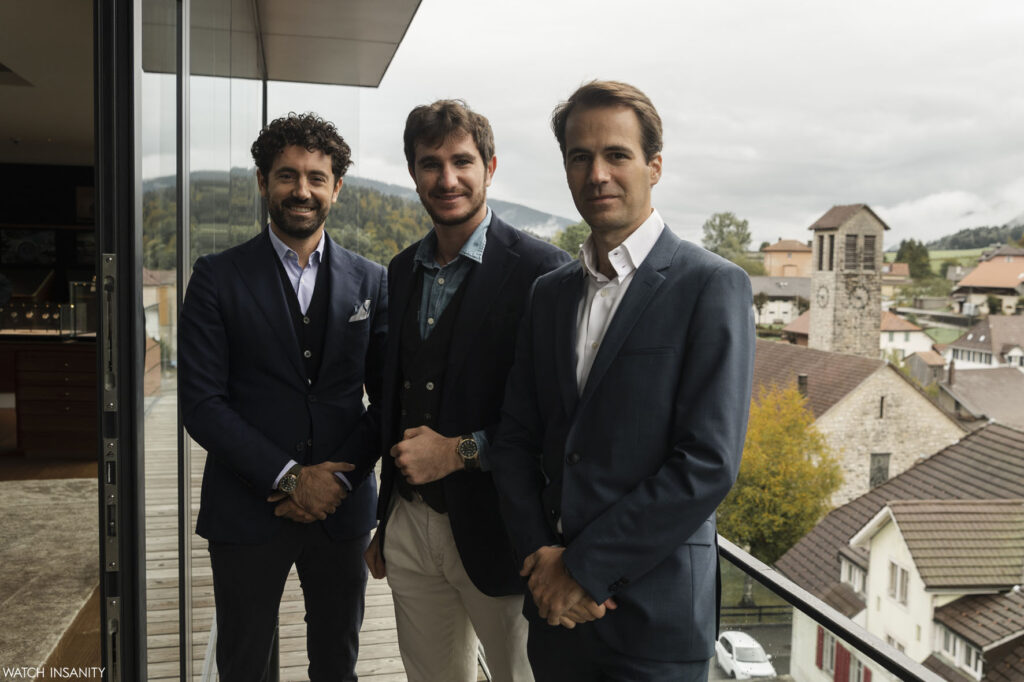
CAPONE: “The Minerva manufacture shaped the history of watchmaking like few others, starting with pocket watches rich in innovation and formidable technologies for the time. It was a pioneer brand in creating professional watches. I had a great experience, I did not think I would have experienced history firsthand, guided in an exemplary way by the people of the manufacture who accompanied me. All this can give added value to our customers, to the product and the brand. As sellers, we are just vehicles, we must enter our stores and pass on those extra details to our employees to ensure that, when they find a customer in front of them, they can perceive the real value of the watch they want to buy.”
Speaking of customers… how have they changed over time? Is there more or less product culture, more or less passion?
VERGA: “There are different types of clients. There are those who enter boutiques and are well prepared already, having consulted the many information sources on the web; then there are those who rely on the dealer, the type of customers with whom we can talk more, to whom even the lesser known products can be touched. I have been in the company for 7 years, and together with my brother we have a group of young customers with whom we periodically organize events, precisely to help them become mature and grow, because the world of watchmaking must be discovered step by step.”

CAPONE: “The clientele is always varied, but today clients are certainly more informed and aware than before. There are more ways to do this, both for enthusiasts and for those approaching this world. For us it is essential to be ready, because it may sometimes be that the customer actually knows more than we do: this must not happen. He must know that, entering our boutique, he will always find qualified staff who will be able to answer his or her questions, from the most banal to the most specific; we must be good at offering them a unique shopping experience. Nowadays you can read the time everywhere, which is why a watch must be an important mix of culture, passion, interest.”
You both have boutiques in cities where a lot of foreign customers pass by: what is their approach to watchmaking compared to the Italian one?
VERGA: “We have always defined ourselves as a workshop, even before Covid, because most of our customers are Italian. The watchmaking culture in Italy is different from that of other countries.”
CAPONE: “Once, foreign and Italian customers were quite similar, while today Italians are often more informed; we must let them speak and we need to speak their language, because they have a wide product culture. And we work a lot with local customers. Many foreigners, on the other hand, come with a picture of the watch they are looking for on their phone, they show it and if you don’t have it, they leave, they don’t consider the alternatives that we can propose. Then, there are 20% of foreigners who, like Italians, love to talk and get advice.”

What is your approach to Montblanc? Did you immediately find yourself in sync?
VERGA: “We became Montblanc dealers in the Porta Nuova store in September 2016. Given the area, we wanted to have an larger offer. It is a brand we have been in sync with, and I am sure that between now and the next few years we will grow well working together. Montblanc has a wide price range combined with very high quality, and with the Geosphere it has also begun to create iconic timepieces, immediately recognizable. The fact that Montblanc has acquired Minerva for the grand complications is tempting to our long-time customers.”
CAPONE: “Montblanc’s values are elegance and tradition, in line with the values of the company that my father set up. We want to keep a precise and recognizable identity, as Montblanc always did, both in leather goods and writing instruments, and in watchmaking, which is still very recent but growing well.”
And it’s also growing well thanks to the very high craftsmanship skills of those who work there. Federico Verga mentioned Mrs. Sandra and her coquille diamantage: she is the only person in the company who knows how to create this type of finish. It is done on the spool, on the crown wheel and on the link between the crown and the spool, with an effect which calls to mind the Yin and Yang symbol. The Montblanc factory owns the only still-working machinery in the world capable of making it and Sandra is, in fact, the only person in the world capable of using it. A heritage to be jealously preserved.
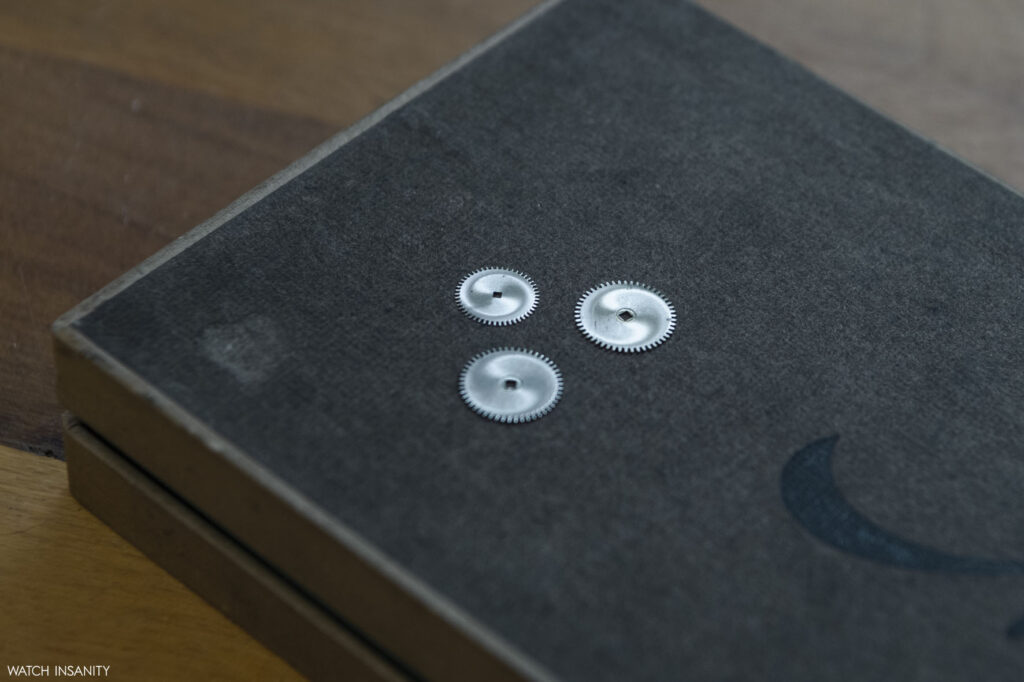
But there are also other special finishes that make the movements of the manufacture unique, and that require a very high level of craftsmanship. For example, the poli noir, which leaves no streaks, stains or scratches and produces exceptional optical effects. Its name comes from the fact that it is an apparently black surface finish when the light falls perfectly perpendicular to the finished piece. On an assembled movement, the poli noirproduces the effect of a kaleidoscope. And if there is something wrong with it (very difficult though), those who have purchased a high-end watch from the brand can speak directly to the master watchmaker who created it.
But let’s go back to our guests.
What do you think the strengths of a “young” brand in terms of watchmaking like Montblanc are, and which are those of a historic manufacturer like Minerva?
VERGA: “Minerva has an unbeatable watchmaking history in terms of movements; Montblanc is luxury. Together they are a combination that will do nothing but good.”
CAPONE: “Since its foundation in 1858, Minerva has accumulated inventions and patents that are fundamental to the world of watchmaking as we know it today; it is something useful for Montblanc, because today a brand is made on historicity, on vintage. Looking at statistics, the more the vintage segment grows, the more the new brand will grow – and the end customer understands that this tradition is a value.”
As you previously said, in the manufacture you have tried your hand at processes such as perlage and anglage; what kind of experience was it? Could you ever do that job?
VERGA: “I would never be able to do a job like that, unfortunately … I’m ‘happy’ to manage the commercial side. And to think that they do it every day, with crazy precision…”
CAPONE: “I tried and I realized that this is not working in the world of watchmaking, that it’s pure craftsmanship, it’s magic. To do this type of work you have to move your hands as if you were playing piano, you have to be an artist. I am not, I am a commercial: I was lucky enough to work alongside my father and to learn new things every day.”
Would you recommend a visit to the Minerva factory to a watch enthusiast?
VERGA: “Of course, customers will surely fall in love with it. All the manufactories are beautiful in their own way, but this one is beautiful because it is in an ‘atelier’ format, making it clear that watchmaking is still a world of traditions and craftsmanship. The customer is used to seeing the final product, but if he looks at what’s behind, he will be speechless.”
CAPONE: “Yes, because I think that the future for companies is to open up to the end customer, to give them the opportunity to visit their production sites. Specifically, visiting a factory opens your heart and eyes. What struck me was the age of the people who work in Villeret, from the employees to the master watchmakers: they are very young and proud to show their work. And in Minerva and Montblanc they did well to make us feel part of a group, of a family, to make us participate as if we had always been friends.”
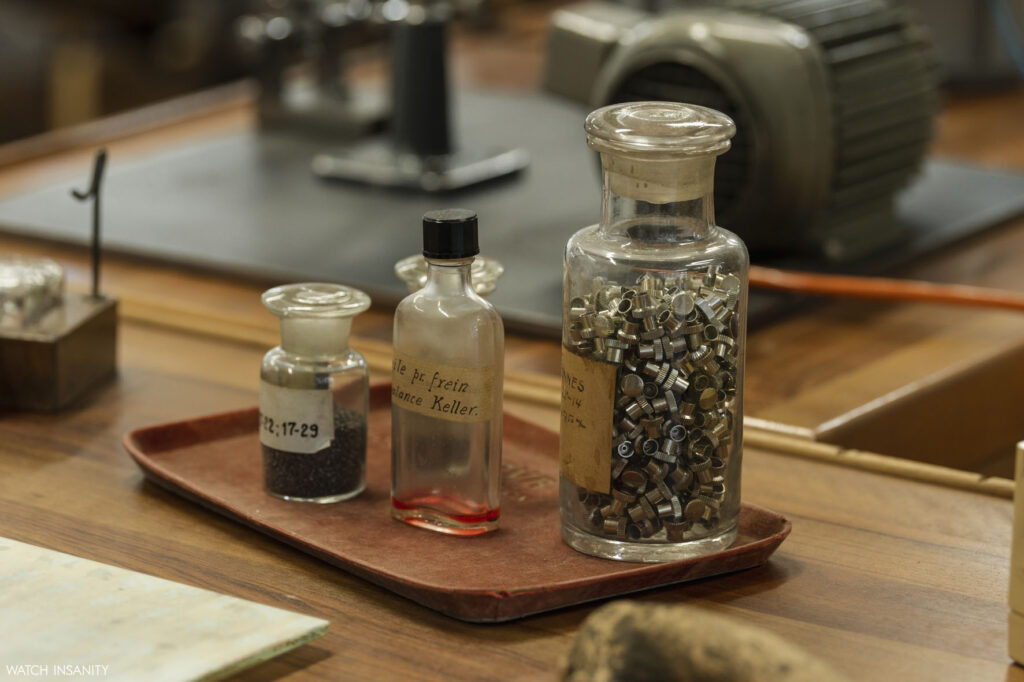

We have seen that this experience has left its mark. In the same way, some of the most significant watches created by the brand in recent years are destined to leave their mark. From the 1858 Automatic, with its minimal vintage look, which recalls the traditions of Minerva, to the 1858 Geosphere which, as Federico Verga recalled, has become an icon of the brand.

But, as we have seen, Montblanc is capable of creating pieces of the highest craft in watchmaking. Here then is the 1858 Split Second Chronograph, presented last spring: the reinterpretation of a Minerva military chronograph from the 1930s. It has the case – one of a kind – in a particular type of gold called Lime Gold, due to the intense golden hue with a delicate green-yellow shade. The rattrapante function places it in the Olympus of chronographs, the finish of the manual winding movement, visible through the sapphire caseback, is a joy for the eyes.

To say more on the finest watchmaking pieces, let’s not forget the Star Legacy Suspended Exo Tourbillon, with its large balance wheel positioned outside the rotating tourbillon cage, that creates a very captivating three-dimensional effect, thanks also to its asymmetrical structure. A movement that took three years to develop, and all the expertise that Montblanc is capable of.
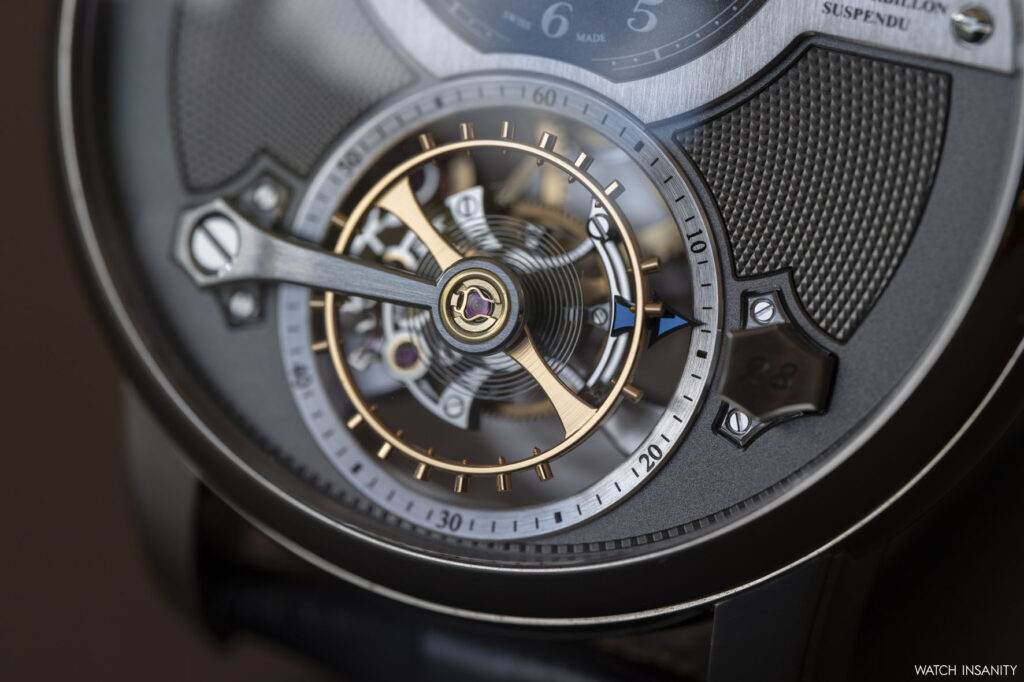
More traditional but equally fascinating is the Heritage Small Seconds. It is greatly elegant without being too formal. The combination of the blue dial and the steel case is hard to beat. The small evolutions of the dial confer exclusivity, although much of the charm of the watch lies in the movement: the low-frequency manual-wound MB M62.00 caliber, an evolution of the ancient Pythagore caliber. And here, Montblanc showcases its finest watchmaking, with an extremely desirable and richly finished historical movement, only for few.
And we’ll end with the Star Legacy Orbis Terrarum, the world-timer according to Montblanc. The particular view of the terrestrial globe from the North Pole characterizes its different versions. It indicates the time in 24 time zones, and marks the evolution of day and night around the world thanks to an in-house complication created by the Maison. Elegance, function and color go together in a watch which, for Montblanc, represents a true aesthetic signature.
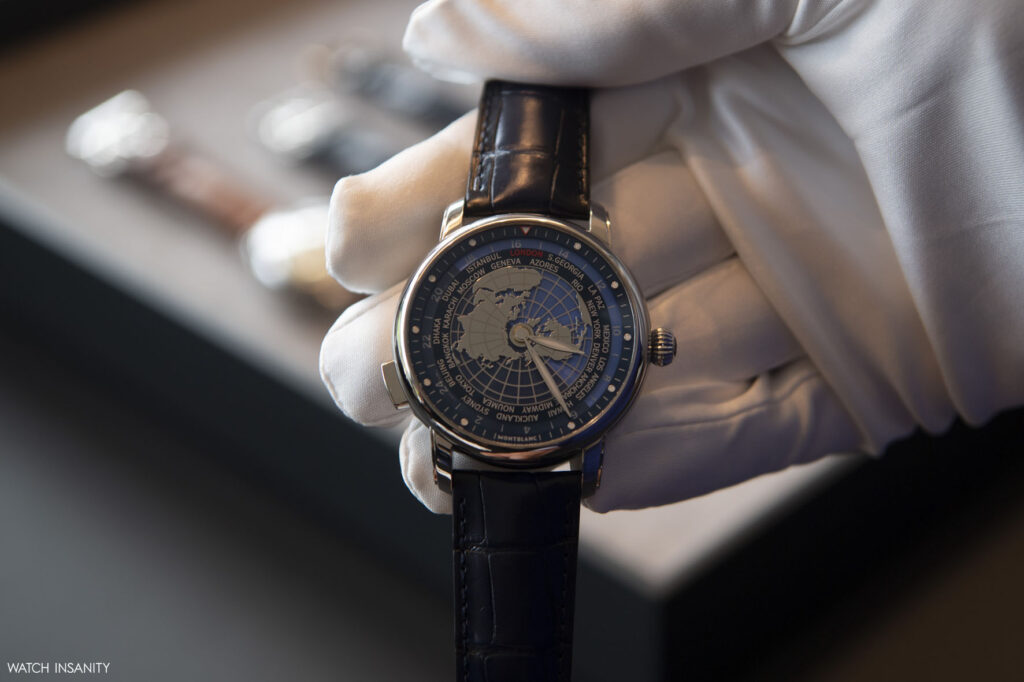
In short, there is enough reasons to plan a visit to the factory in Villeret. Or not?
By Davide Passoni
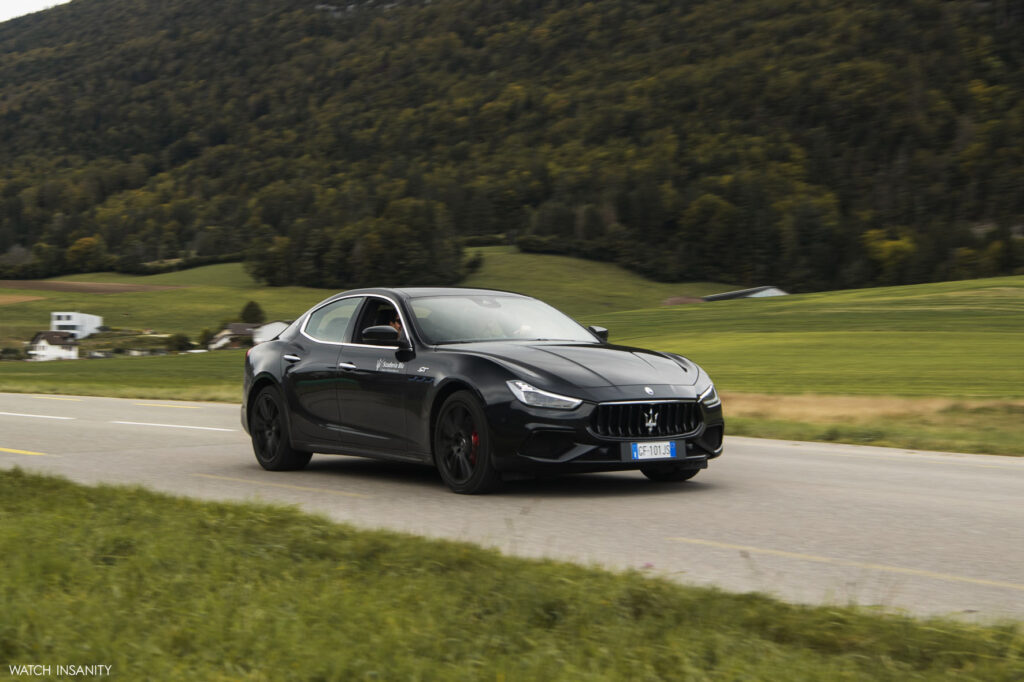
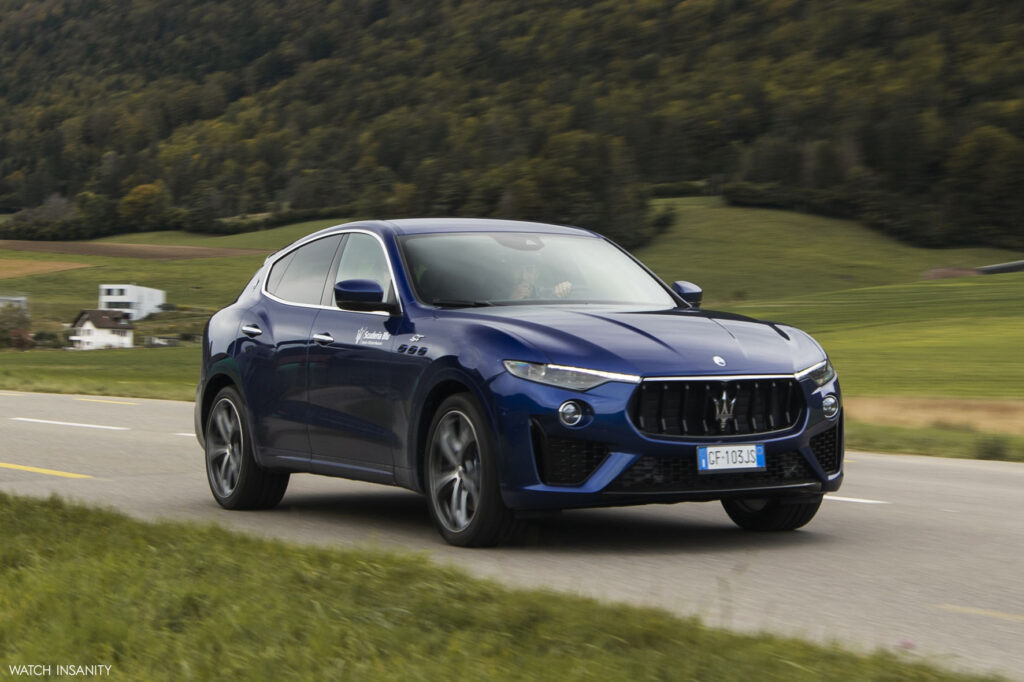
Cars courtesy Scuderia Blu Maserati

